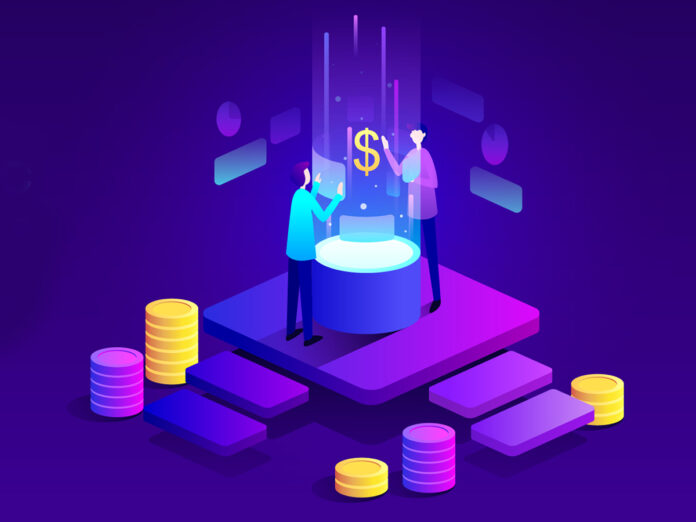Fintech Staff Writer
Payments have been redefined in business. You may even recall a time when payment processing was just something you did at the end of a transaction, buried behind the desk in some back room of your office, something administrative. Finance departments viewed payments as isolated transactions, disconnected from the businesses and customers they served.
This disjointed approach equated to inefficiencies and lost opportunities at every level within the organization. Payment infrastructure is no longer at the core of business.
Today’s fintech solutions extend far beyond transaction processing, powering user experiences, driving growth strategies, and ensuring regulatory compliance. Your payment structure now impacts the customer-acquisition process, retention, and even the efficiency of your operations.
Introducing the Fintech-Powered Business Core
It’s the Fintech OS that re-imagines the way businesses operate their fintech infrastructure. Fragmented payment tools that work independently are no longer necessary in your company. Instead, a Payment OS provides a comprehensive fintech infrastructure that integrates seamlessly with all your business processes.
This method turns payments from a cost center to a strategic asset. By deploying a Payment OS, you establish a hub of financial activities that ties customers’ front-end user experiences with backend operations. Today’s fintech ecosystem supports this integration through APIs, microservices, and cloud-native architectures designed with your business in mind.
Core Components of Fintech Infrastructure
Understanding the structure of a Payment OS helps you evaluate your current fintech stack. A complete system includes these essential components:
- Processing engines that handle transactions across multiple payment methods and currencies.
- Billing systems for subscription management, usage-based pricing, and automated invoicing.
- Reconciliation tools that match payments with orders and accounts receivable entries.
- Settlement capabilities for managing payouts to vendors, partners, and marketplace participants.
- Anti-fraud mechanisms that protect both your business and customers from financial threats.
How Fintech Makes Payments Smarter?
Modern Payment OS platforms incorporate sophisticated intelligence layers powered by advanced fintech innovations. These capabilities transform raw transaction data into actionable business intelligence:
- Predictive Analytics: Systems that forecast cash flow trends, identify potential payment failures, and suggest optimization strategies.
- Dynamic Pricing: Algorithms that adjust pricing based on customer behavior, market conditions, and competitive positioning.
- Fraud Prevention: Machine learning models that continuously adapt to emerging threats while minimizing false positives.
- Personalization Engines: Tools that customize payment experiences based on individual customer preferences and history.
Control Systems for Financial Operations
The control layer of your Payment OS provides visibility and governance across financial operations. Finance teams gain access to real-time dashboards showing transaction volumes, success rates, and revenue metrics. You can configure automated rules for payment routing, retry logic, and exception handling without developer intervention.
Compliance management becomes streamlined through integrated regulatory checks and documentation. The best fintech platforms offer no-code tools that empower financial teams to make operational changes independently. These control systems create operational efficiency while maintaining appropriate governance structures.
Read More: Why the Payments Industry is Facing Its Biggest Transformation in a Decade
Strategic Business Impacts
Implementing a comprehensive Payment OS creates strategic advantages that extend far beyond efficient transaction processing. Organizations with mature fintech infrastructure experience:
- Accelerated expansion into new markets without rebuilding payment stacks for each region.
- Improved cash flow through optimized payment timing and reduced transaction failures.
- Enhanced customer loyalty from seamless payment experiences across channels.
- Greater agility in launching new products with flexible monetization models.
- Reduced operational costs through automation of financial workflows and reconciliation.
Emerging Trends Shaping Future Payment OS
The payment OS environment continues to evolve at a rapid pace, and several new technologies appear poised to be game-changers for the world of fintech infrastructure. You will encounter embedded finance models more frequently, where non-financial brands integrate payments as part of their customer journey. These integrations blur traditional boundaries between financial services and other industries.
Decentralized finance technologies offer new possibilities for Payment OS architectures:
- Blockchain-based settlement systems are reducing cross-border transaction times from days to minutes.
- Smart contracts are automating complex payment flows with conditional logic and multi-party verification.
- Tokenization frameworks are enabling new asset types and fractional ownership models.
- Real-time treasury management tools are optimizing working capital across global operations.
Open banking initiatives create unprecedented opportunities for data connectivity between systems. Your Payment OS will leverage these connections to provide holistic financial views across previously siloed platforms.
Implementing Your Payment OS Strategy
Get started on your Payment OS journey by mapping your existing payment procedures and pain points. Concentrate early gains on things that have a direct impact on the customers or on things that are very fundamentally inefficient. Fintech is a specialized marketplace for nearly every industry and business model.
Decide if you want to develop your own components or integrate with the existing fintech platforms according to your needs. Several of them employ hybrid strategies, utilizing core fintech platforms and integrating custom middleware. Look for solutions that not only offer a robust API but also developer tools to support evolving over time.
Keep in mind that your payment stack is becoming increasingly important to what you can do as a business. These organizations, which treat these fintech systems as mission-critical infrastructure, achieve compelling differentiation in experiences, insights and agility. As software disrupts industries, payment capabilities are a critical factor determining which businesses can most effectively execute on their digital strategies.
Read More: Global Fintech Interview with Radha Suvarna, Chief Product Officer of Payments at Finastra
[To share your insights with us, please write to psen@itechseries.com ]
